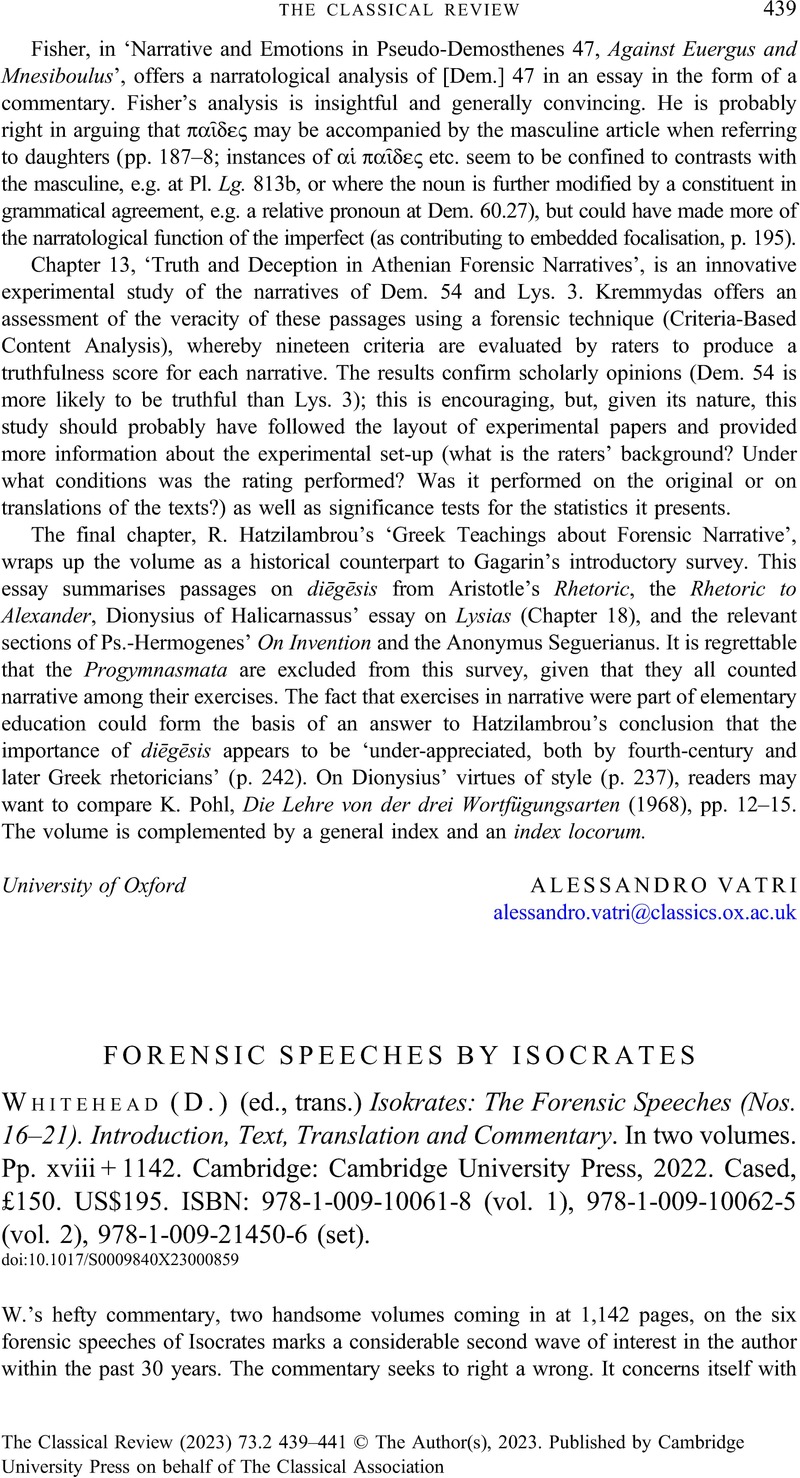No CrossRef data available.
Article contents
FORENSIC SPEECHES BY ISOCRATES - (D.) Whitehead (ed., trans.) Isokrates: The Forensic Speeches (Nos. 16–21). Introduction, Text, Translation and Commentary. In two volumes. Pp. xviii + 1142. Cambridge: Cambridge University Press, 2022. Cased, £150. US$195. ISBN: 978-1-009-10061-8 (vol. 1), 978-1-009-10062-5 (vol. 2), 978-1-009-21450-6 (set).
Review products
(D.) Whitehead (ed., trans.) Isokrates: The Forensic Speeches (Nos. 16–21). Introduction, Text, Translation and Commentary. In two volumes. Pp. xviii + 1142. Cambridge: Cambridge University Press, 2022. Cased, £150. US$195. ISBN: 978-1-009-10061-8 (vol. 1), 978-1-009-10062-5 (vol. 2), 978-1-009-21450-6 (set).
Published online by Cambridge University Press: 16 May 2023
Abstract
An abstract is not available for this content so a preview has been provided. Please use the Get access link above for information on how to access this content.

- Type
- Reviews
- Information
- Copyright
- Copyright © The Author(s), 2023. Published by Cambridge University Press on behalf of The Classical Association



